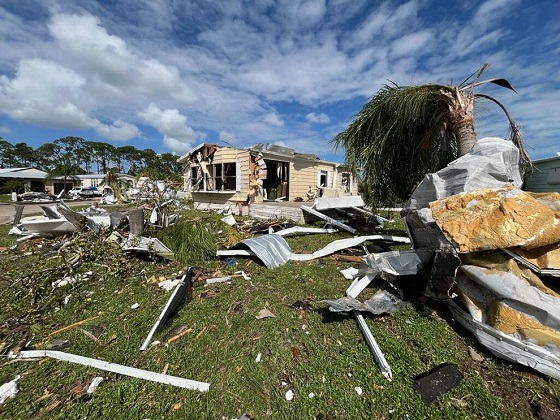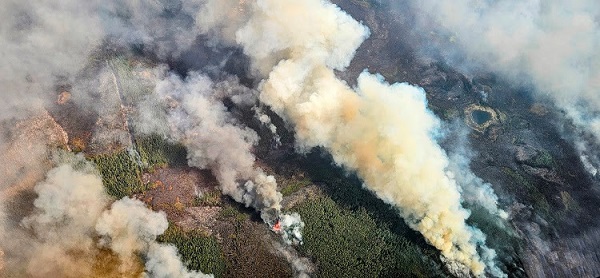From The Center Square
By Casey Harper
There should be “equitable and fair distribution of assistance to all those affected – especially those disproportionally impacted.”
The “especially” signifies a belief in the DEI community that certain groups, including transgender people or minorities, suffer more from natural disasters.
The Federal Emergency Management Agency is taking fire for its increased focus on migrants, and diversity, equity and inclusion policies while its response to recent hurricanes is under scrutiny.
Many Americans assume FEMA is only focused on helping respond to disasters, but a closer look at FEMA’s recent internal documents, spending, and public actions shows that FEMA has broadened its focus to handling the flow of migrants into the U.S. and attempting to double down on DEI initiatives on gender, sexuality and race.
FEMA’s 2022-2026 strategic plan, an overarching document created by agencies to lay out their priorities, named its first goal not as disaster relief, but instead diversity, equity and inclusion.
In its first goal, the plan promised to “Instill equity as a foundation of emergency management.”
It’s second named priority is to “lead whole of Community in climate resilience.”
FEMA’s “readiness” comes in as the third goal in the plan.

TCS – FEMA’s 2022-2026 Strategic Plan (Courtesy FEMA)
“Diversity, equity, and inclusion cannot be optional; they must be core components of how the agency conducts itself internally and executes its mission,” the plan reads.
FEMA makes clear in its plan that equity, which includes racial identity, will be taken into consideration when distributing aid, highlighting that there should be “equitable and fair distribution of assistance to all those affected – especially those disproportionally impacted.”
The “especially” signifies a belief in the DEI community that certain groups, including transgender people or minorities, suffer more from natural disasters.
FEMA has also hired Montage Marketing Group to “elevate diversity and engage employees in creating an inclusive workplace.”
Those efforts included kicking off an “Inclusive Diversity Council” and promoting Transgender Day of Remembrance.
FEMA’s drift in focus took center stage after U.S. Department of Homeland Security Secretary Alejandro Mayorkas told reporters during the agency’s response to Hurricane Helene, which devastated portions of North Carolina, Tennessee and West Virginia, that while FEMA had enough funds to respond to deadly Hurricane Milton, it may not have enough to finish this hurricane season.
“We are meeting the immediate needs with the money that we have,” Mayorkas told reporters at the time. “We are expecting another hurricane hitting. FEMA does not have the funds to make it through the season.”
His comments come after reporting showed that in April of this year, FEMA announced $640 million in new funding, $300 million of which was for helping immigrants settle in the U.S. The other $340 million of that funding was set aside to be awarded as grants to cities also for migrants.
Critics immediately took issue with the FEMA migrant funding, which was not new but stood out in light of Mayorkas’ comments.
Defenders of FEMA point out that money for migrants and disaster relief are funded differently and don’t necessarily take away from one another.
Critics argue it shows misplaced priority at FEMA when migrant issues are more than funded but the administration is in danger of running out of disaster funding.
The White House stressed to The Center Square that FEMA is not in danger of immediately running out of money in a way that would prevent current victims from receiving aid.
“FEMA has what it needs for immediate response and recovery efforts. As FEMA Administrator Deanne Criswell has said, she has the full authority to spend against the President’s budget, but we’re not out of hurricane season yet so we need to keep a close eye on it, “Director of Public Affairs and FEMA Spokesperson Jaclyn Rothenberg said in a statement. “We may need to go back into immediate needs funding and we will be watching it closely.”
But FEMA has been spending hundreds of millions of dollars for years to address the border crisis, in which at least 14 million illegal immigrants have crossed the border into the U.S. since President Joe Biden took office.
In another example of FEMA’s broader focus, The New York Post reported that a video call roundtable from last year included FEMA DEI leaders backing an array of DEI efforts.
During the event, which was called “Helping LGBTQIA+ Survivors Before Disasters,” one federal employee discussed shifting FEMA’s mission from serving the “greatest good for the greatest amount of people” to focusing more on “disaster equity.”
A 36-page FEMA DEI guide for employees published in May 2023 says that FEMA employees should “have conversations about differences in race, religion, age, disability, gender, ethnic origin or sexual orientation.”
“The more diverse leadership, teams and collaborations are, the stronger, more equitable and inclusive a program becomes,” the report continued.

















